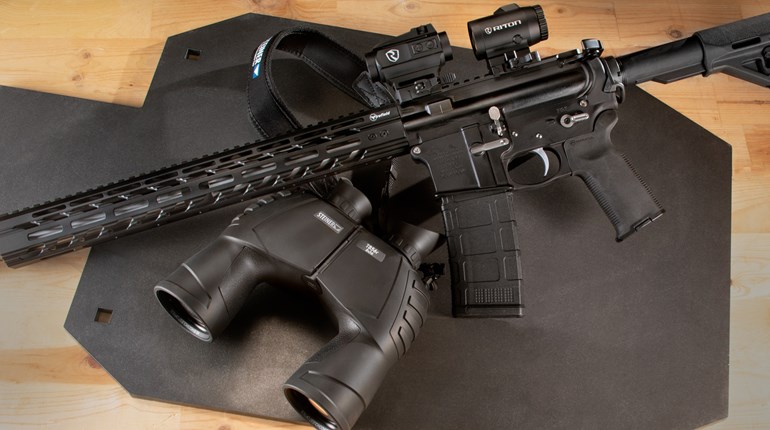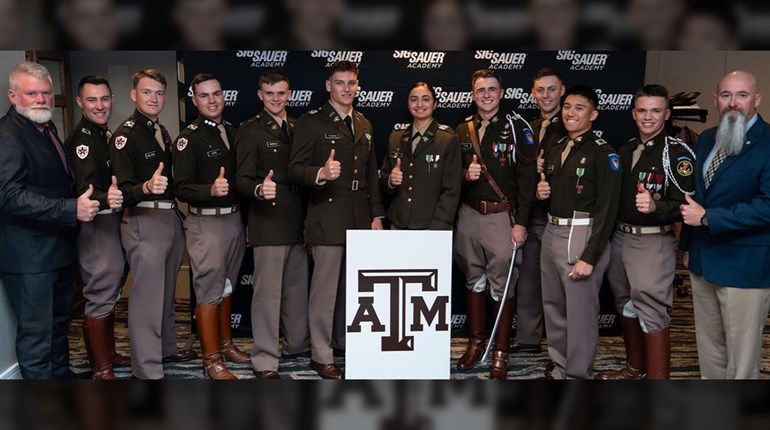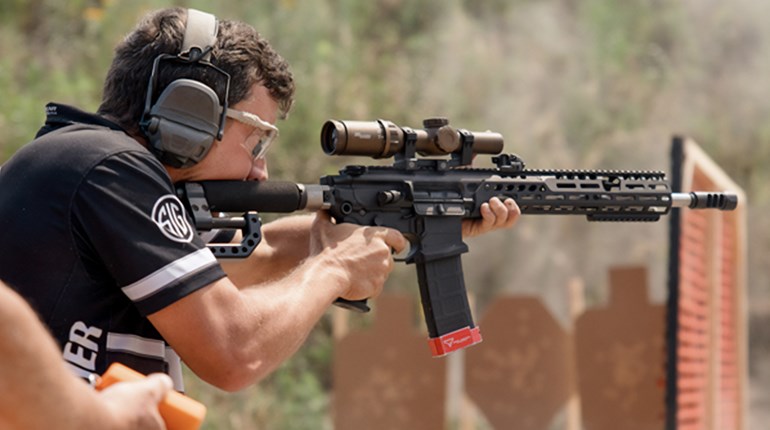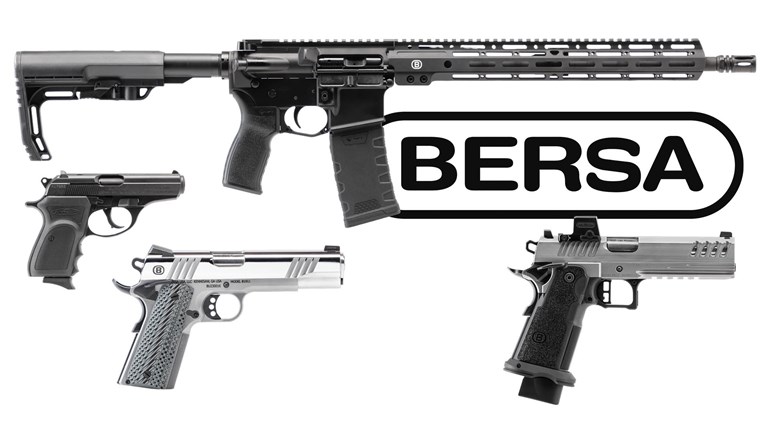
SIG Sauer’s roots can be traced to mid-19th century Switzerland, where an unlikely start as a wagon manufacturer quickly landed the company knee-deep in the world of military-arms production. The worldwide reputation SIG has built in the century-and-a-half since has made its name synonymous with quality. SIG’s American incarnation began in 1985 with a string of successful pistols, followed by a smattering of shotguns and rifles. Typical Swiss quality translated well to the U.S. market and earned the company an excellent reputation within U.S. military, law enforcement and civilian shooting circles. My own experience with SIG in the Army was mostly limited to testing and familiarization training. But, my SOF counterparts in other branches swore by their SIG firearms, and for good reason: They worked, period. It seems a wave of evolution has swept over the company, leaving in its wake a line of tactical products extending far beyond its traditional guns. Sound suppressors and tactical electro-optics standout in particular amongst SIG’s crop of new offerings. In recent years I have enjoyed testing some of the company’s newer guns and suppressors, so I was happy to round things out by also sampling SIG’s new line of electro-optics.
Before diving into product specifics, I should highlight one important aspect of SIG’s new product-development methodology. Rather than buy brands, SIG Sauer has quietly been scarfing up some premium talent in the shooting-sports arena over the past couple years. Champion shooters, experienced SOF Operators and well-known firearm innovators have joined SIG’s ranks, helping to modernize the company’s product lines along the way. SIG’s new optics are not the result of some whiteboard-laden, bean-counter-driven, egghead engineer marketing session. Instead, they reflect direct input from professional shooters with on-the-ground experience in a wide variety of disciplines.
SIG breaks its optical products into several categories: Tactical and hunting riflescopes, battle sights, reflex sights, red-dot sights, pistol sights, rangefinders, spotting scopes, binoculars, laser sights, thermal reflex sights, weapons-mounted lights and scope mounts. The electro-optics are backed with an “Infinite Guarantee” to repair or replace all but the electronic components (which carry a five-year warranty) without need of registration or proof-of-purchase. I have had some terrible customer-service experiences with a certain well-known electro-optics company, so it is always good to see a manufacturer truly stand behind its products.
My initial impression as I unpacked a box of SIG optics was that every item—from the spotting scope to the tiny reflex sight—was lightweight and designed with an eye toward ease of use. Buttons are pretty much where they should be, features are uniform amongst a wide variety of optics, housings and bodies are stout without feeling clunky and optical clarity is excellent. The sights I tested all feature SIG’s MOTAC motion sensing technology. After sitting still for about 2 minutes, the aiming point turns off. Very little movement immediately activates the reticle. I even blew air on one sight and it turned on every time. This is a great battery-saving feature for optics that may be needed without warning. All items tested are advertised as waterproof and fogproof and though I did not immerse anything, several items weathered rain and fog without any signs of leakage at all.
Once all my testing was finished, I reluctantly repacked the box to ship all items back to SIG’s optics division in Oregon. I would have happily added any of the tested items into my shooting gear were it not for that little problem of having to stay on budget. Even so, the price on each of these items is very competitive and should give SIG’s industry peers pause, particularly in light of the features the optics bring to the table. Given the variety of SIG’s electro-optics offerings, I am fairly certain the company will have an option for my needs the next time I am in the market.

Kilo 2000 Rangefinder
I thought my own hand-held rangefinder was small until I picked up this 7.5-ounce wonder. At a very compact 3x4.2x1.3 inches, you can stow it in a shirt pocket, hunting belt, ammo pouch or any other hidey hole. The 7x25 mm optic has amazing range—3,400 yards for reflective objects like buildings, 1,500 yards for tree-size objects and large game out to about 1,200 yards. By comparison, my old Bushnell Yardage Pro 1200 can range a small barn at 1,000 yards on its best day. One of the great things about the Kilo 2000 is its continuous “Hyperscan” mode. By holding down the ranging button, you can scan different objects and receive updates at a rate of four times per second. I used this feature repeatedly and found it works very well. In moderate vegetation, where most rangefinders get hung up by brush, the Kilo 2000 finds holes and lets you see ranges to all things near and far. It also has a built-in inclinometer that adjusts the displayed range for any up or down angles to target. I compared it to my old Bushnell at different targets and the Kilo 2000 won the range-off, hands down. I was even able to range a red-tailed hawk on top of a dead tree when the Yardage Pro could not even discern the larger tree. The Kilo 2000 is one of those “wish I had this in my Army days” items.
MSRP: $626

Oscar 3 Spotting Scope
Normally the words “hand held” and “spotting scope” do not work in the same sentence. The Oscar 3 family destroys that old notion by way of its image-stabilizing system. The version I tested is SIG’s smallest spotting scope, providing a zoom range of 6X to 12X with a 25 mm objective. A 10-20x30 mm version is also available. A sliding switch positioned on top and in front of the eyepiece activates the stabilization feature, which counters much of the jittery image normally seen when holding a magnified optic in hand. You will not find the usual threaded tripod adapter on the Oscar’s bottom side. Instead, the palm-size spotter makes its home either in-hand or in a pocket. At 14 ounces, it is far lighter than contemporary scopes and is ideal for use while moving through the woods or while stalking over a field. This Oscar 3 is not a static-range spotting scope, though it can be used that way in a pinch. At 12X I could make out .22-caliber holes in my target at 100 yards, but I could not quite see enough detail to accurately judge group sizes. The Oscar 3 really earns its keep on the hoof when you need to stop momentarily to get a closer look at something. I found the image a bit less stable than my Canon 8X stabilized binoculars, but those are bigger, heavier and more expensive. My only real complaint about this spotting scope is that it does not have a press-and-release-type switch to activate the image-stabilization feature. The sliding switch is a little awkward to manipulate on and off repeatedly and while moving, especially with gloved, cold fingers. But that is a small complaint for what you are getting in this little spotter.
MSRP: $625 to $750

Romeo 3 Reflex
This tiny, heads-up-style reflex sight has a vibrant, 3-MOA red dot for aiming. Side-mounted buttons control brightness and, like similar reflex sights, pressing both buttons simultaneously turns the dot off after a couple seconds. When the sight is on, the MOTAC feature works as designed. A single CR2032 battery is loaded via a sliding tray in the sight’s side, so no zero-loss through dismounting occurs when changing one out. The Romeo 3 comes ready to mount low on a Picatinny rail, but a co-witness mount must be purchased separately. Windage and elevation adjustments are handled via a pair of tiny hex screws recessed into the aircraft-grade aluminum housing. The flyweight sight barely moves the scale at 1.4 ounces and has nine daytime brightness settings and two settings for nighttime use. The Romeo 3 should provide stiff competition to the smallest products offered by Trijicon and Aimpoint.
MSRP: $475 to $500

Romeo 4C and 4D Red Dot
Four total models make up the Romeo 4 category. The versions I tested share the same form factor, but have minor differences in their power sources. The 4C is solar-powered with battery backup, while the 4D is battery only. They can be mounted either with a low-profile mount or an “Absolute Co-witness” mount. I tried the 4C in low-pro configuration and co-witnessed the 4D to my backup sights. Either sight provides a choice between a single 2-MOA red dot or a 2-MOA dot surrounded by a 65-MOA circle. Depressing the brightness-adjusting buttons for a couple of seconds toggles between the reticles. Neither sight has a manual-off mode, but both feature MOTAC and turn off around the 2-minute mark. Battery life for the CR2032 battery that powers each sight is projected at 50,000 hours, so the spare battery in your pistol grip will probably be dead long before you need it. Each sight features 10 day and two night-vision brightness settings, and weights fall into a miniscule 3.2- to 3.4-ounce range.
I found the 20 mm objective to look about the same in terms of clarity and FOV as the popular Aimpoint T1 family of sights. Reticle adjustments may be made in .4-MOA increments by uncapping the turrets and either using the reverse driver machined into the knurled caps or a separate flat-tip driver. Each sight has spring-loaded flip caps to help protect lenses in rough environments. I found I could dim the dots sufficiently to make as precise a shot as my eyes allow at 100 yards in bright daylight. Many modern red-dot and reflex sights fuzz out for me, but the Romeo 4 series did not. That said, I had to dim the 4D’s dot in order to use my backup sights because it is constantly on and bright enough to obscure the front sight. Since most co-witnessed open sights serve primarily as backups, however, this is not a big deal.

The solar feature on the 4C is unique in that so long as you have ambient light available to reach the top-mounted panel, the reticle lights up. No battery is needed to complete the circuit. The only limitation I found is that natural light has to shine on the solar array. If you try to use the sight with a dead battery in the dark, even a powerful weaponlight shining on your target will not provide enough ambient light to power the reticle. This limitation is similar to that experienced with sights that have non-etched, fiber-optic and tritium-powered reticles. But for daytime use in virtually all light conditions, the solar array works very well.
MSRP: $375 to $625

Tango 6 Riflescope
Good riflescopes are a real treat to use, and the Tango 6 I tested was definitely at home in this category. I mounted this 3-18x44 mm tactical scope on eight different rifles over a 30-day period, firing between 75 and 125 rounds through each. The Tango 6 is available with either first- or second-focal-plane illuminated reticles. I tested the first-focal-plane version. The reticle provides 10 mils in each direction from the center, which is occupied by a tiny dot perfectly sized for precision shooting. Marks are placed at the full and half mils, with two segments per reticle leg subtending to .2-mil for precise measuring or ranging. While Spartan by modern hold-over reticle standards, this one is still very useful.
The windage and elevation turrets lock by pushing their caps down toward the scope’s 30 mm tube and stay that way until you pull them back up. This feature is important for anyone who uses their scope in a rough environment. The knobs also feature a resettable zero stop that can be locked at any position. The scope is available with either .1-mil (tested) or .25-MOA click values, and my sample tracked true.
A single CR2032 lights up the mil portion of the reticle and is rheostat-adjustable for brightness. Each rheostat setting is followed by an “off” setting, so you can keep the illumination off, but close to your preferred brightness so it’s ready to go when needed. Like the smaller optics, this scope features motion-sensing activation when the illumination is turned on.
MSRP: $1,874 to $2,999




































